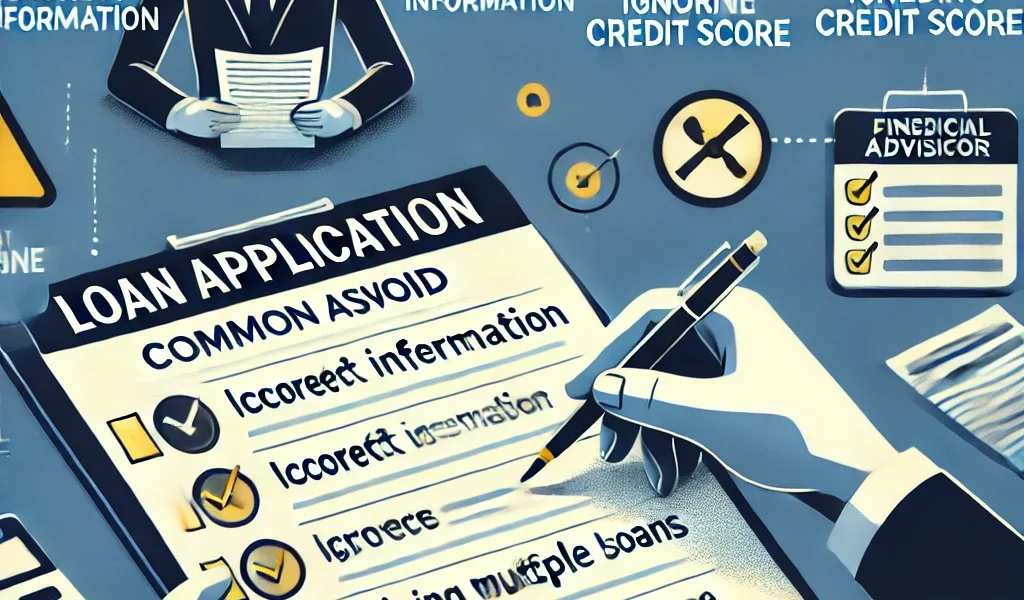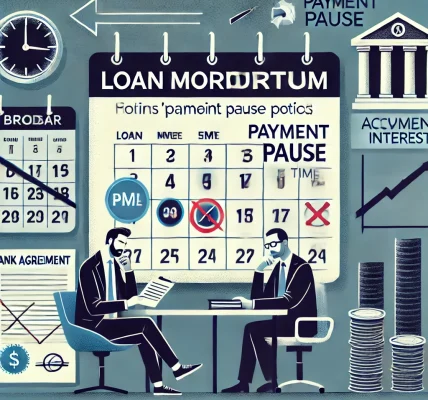Applying for a loan can be a crucial financial decision that impacts your future. Whether you are seeking a personal loan, home loan, car loan, or business loan, avoiding common mistakes can increase your chances of approval and ensure you get the best terms possible. Many applicants unknowingly make errors that can lead to rejection, higher interest rates, or financial strain in the long run. This guide will walk you through the most common loan application mistakes and how to avoid them.
1. Not Checking Your Credit Score Before Applying
Your credit score is one of the most important factors lenders consider when approving a loan. A low credit score can result in loan rejection or higher interest rates. Many applicants fail to check their credit scores before applying, which can lead to surprises.
How to Avoid This Mistake:
- Check your credit score from a reliable source before applying.
- If your score is low, improve it by paying off debts and ensuring timely bill payments.
- Dispute any incorrect information in your credit report.
2. Applying for Multiple Loans at the Same Time
Submitting multiple loan applications within a short period can harm your credit score. Each lender conducts a hard inquiry on your credit report, which lowers your score and signals financial distress.
How to Avoid This Mistake:
- Research and compare loan options before applying.
- Apply for a loan only when you are confident about your eligibility.
- Space out loan applications to minimize hard inquiries on your credit report.
3. Ignoring Loan Terms and Conditions
Many borrowers focus only on the loan amount and interest rate while ignoring the fine print. Hidden fees, penalties, and unfavorable terms can lead to financial trouble later.
How to Avoid This Mistake:
- Read the terms and conditions carefully before signing any agreement.
- Ask the lender about hidden fees, such as processing charges, prepayment penalties, and late payment fees.
- Seek professional advice if you don’t understand certain terms.
4. Overestimating Your Repayment Capacity
Taking a loan beyond your financial capacity can lead to difficulties in making timely payments, increasing your risk of default and damaging your credit history.
How to Avoid This Mistake:
- Assess your monthly income and expenses to determine an affordable EMI amount.
- Use online loan calculators to estimate monthly repayments.
- Avoid taking loans that consume more than 40% of your monthly income.
5. Choosing the Wrong Loan Type
Different loans serve different purposes, and choosing the wrong one can result in higher costs and unnecessary complications.
How to Avoid This Mistake:
- Research different loan options available in the market.
- Choose a loan type that aligns with your financial needs (e.g., personal loans for emergencies, home loans for buying property, and business loans for company expansion).
- Consult a financial advisor if you are unsure.
6. Not Comparing Interest Rates from Different Lenders
Interest rates vary across lenders, and failing to compare rates can lead to paying more than necessary.
How to Avoid This Mistake:
- Compare interest rates from multiple banks and financial institutions.
- Consider both fixed and floating interest rates based on your preference.
- Negotiate with lenders to secure the best possible rate.
7. Providing Incomplete or Incorrect Information
Submitting inaccurate details on your loan application can lead to rejection. Lenders verify all the information provided, and discrepancies can raise red flags.
How to Avoid This Mistake:
- Double-check all details before submitting your application.
- Provide accurate financial information, including income, employment details, and assets.
- Ensure your documents match the details provided in the application.
8. Ignoring Additional Costs and Fees
Apart from the principal and interest, loans come with additional charges like processing fees, documentation fees, and insurance premiums.
How to Avoid This Mistake:
- Request a breakdown of all costs associated with the loan.
- Factor in these costs when budgeting for loan repayments.
- Choose lenders with transparent fee structures.
9. Not Considering Prepayment and Foreclosure Charges
Some loans come with restrictions on early repayment, and borrowers who wish to close their loans early may face hefty prepayment penalties.
How to Avoid This Mistake:
- Check the lender’s policy on prepayment and foreclosure.
- Opt for loans with minimal or no prepayment penalties.
- Plan your repayment strategy accordingly.
10. Failing to Maintain a Stable Employment Record
Lenders assess job stability before approving a loan. Frequent job changes or unstable income sources can reduce your chances of approval.
How to Avoid This Mistake:
- Maintain a steady employment record for at least six months to a year before applying for a loan.
- Provide proof of consistent income, such as salary slips and tax returns.
- If self-employed, ensure your business has a stable financial track record.
Conclusion
Applying for a loan is a significant financial decision that requires careful planning and attention to detail. By avoiding these common mistakes, you can improve your chances of loan approval, secure better interest rates, and ensure a smooth borrowing experience. Always research your options, maintain a good credit score, and be transparent with your lender to make the process hassle-free and financially beneficial.




